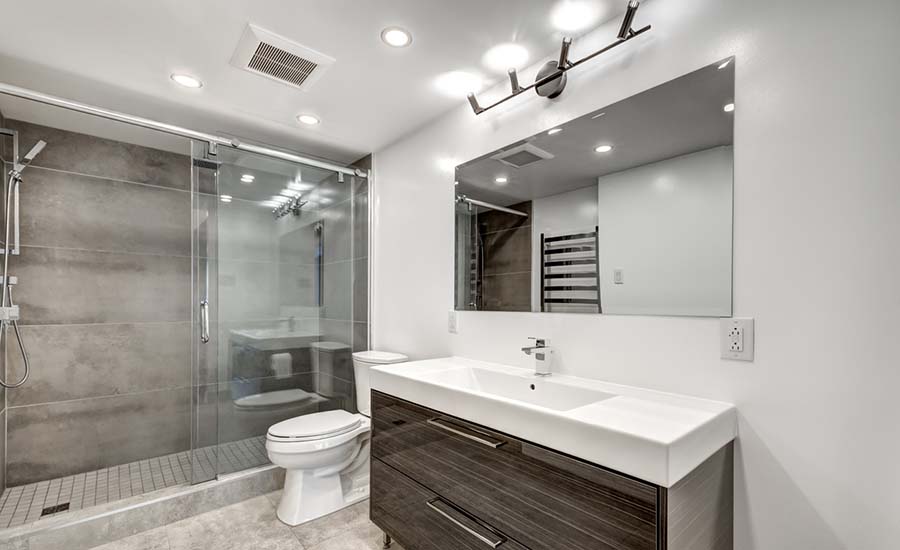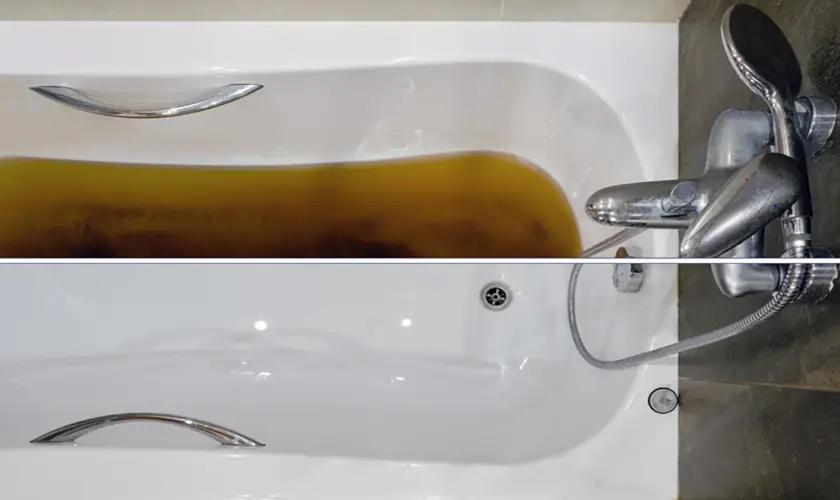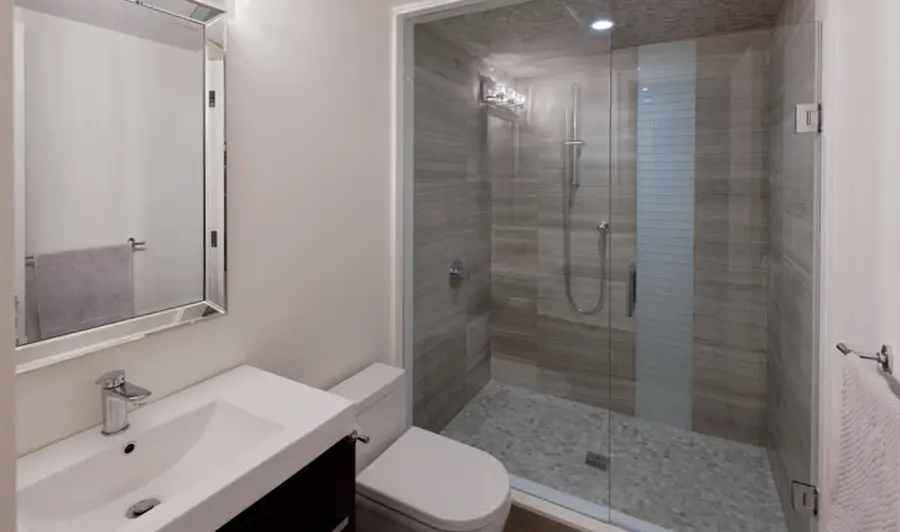Toilets in homes and businesses are simple plumbing fixtures that are easy to understand. But, despite being easy to use and low maintenance, toilets have their fair share of potential issues. Aside from clogs, the toilet tank not filling up is one of the most common problems in the bathroom.
Several different things could be causing your toilet tank not to fill with water. A broken toilet fill valves is usually the main reason a toilet won’t fill, but there could be other causes. You could have a faulty flapper, water supply line, float, or leak.
If your toilet tank won’t fill up with water, there’s a good chance it won’t flush water. You won’t be able to use a toilet that doesn’t flush, which means it’s crucial to find a remedy. This article will look at all the possible reasons that your toilet isn’t filling and what to do about them. Let’s get flushing!
How Does a Toilet Work?
To better understand the problems associated with a toilet that won’t fill, you should first understand how a toilet works. Once you know the purpose of each component, it will make sense why any of them can cause a problem.
- You push the toilet flush lever or handle arm to start the flushing process.
- The handle you push has an arm inside the toilet tank connected to a lift chain.
- As you push the toilet valve handle down on the outside, the arm on the inside with the chain attached to it lifts.
- The other end of the chain gets connected to a flapper. As the chain raises, the flapper lifts to let the flow of water down the flush valve and into the toilet bowl.
- When water has gone from the tank to the bowl, the flapper sits back down as the toilet handle returns to its resting position.
- The flapper forms a perfect seal around the flush valve and keeps water flowing back into the tank from draining into the toilet bowl.
- A fill valve in the toilet tank activates and allows water to flow from the supply line back into the tank.
- Water flows from the base of the float valve and fills the tank by entering through the refill tube.
- There’s an overflow tube that the fill water valve gets attached to that prevents excess water from overfilling your toilet tank.
- Your tank has a toilet float ball that rises with the water. It signals the fill valve when the tank is full, so you know when to shut off the water supply.
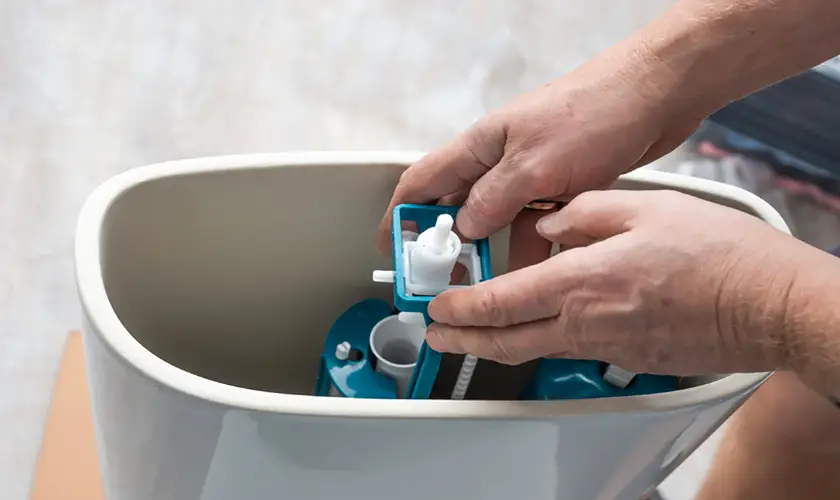
Top Reasons Why My Toilet Won’t Fill and What to Do
Now that you understand the importance of each part of a toilet let’s explore what can prevent it from filling up.
Water Supply Line Issues
Water pressure issues can lead to continuous water flow or continuous water leakage, which not only causes water wastage but also prevents the tank from filling properly.
To ensure that the issue isn’t with the shut-off valve, it’s crucial to check if the water shut-off valve is fully open. Sometimes, the shut-off valve might be partially closed, which can restrict the incoming water, leading to insufficient filling of the tank.
One of the most clear possible problems is that you have a problem with your water supply line. Your supply line is connected to the back of your toilet, usually somewhere close to the ground. If your toilet was recently repaired, you may have forgotten to turn the water back on.
It’s also possible that there’s a leak or clog in the water supply line. Your toilet tank may still fill with water with clogs and leaks, but very slowly. If your issue is the low water pressure is caused by a leak, the most likely location is at the water supply valve.
How to Fix
The most straightforward toilet problem in the world is if someone forgets to turn the water supply back on. Simply twist the valve on the supply line to the ON position, and you’re good to go. Clogs and leaks in the waterline, however, are a bit trickier. You’ll have to turn off the water supply to the entire house and drain the waterline.
Next, disconnect the water supply line from the toilet and replace it and the water supply valve with new ones. If this doesn’t fix the problem, the issue may be in one of the main supply lines. If so, you should turn over the job to a professional plumber.
Faulty Fill Valve
A faulty fill valve will cause a similar issue to a water supply problem. The fill valves’ only responsibility is to fill the toilet tank and bowl with water after the flush cycle. The toilet fill valve is usually located on the left side of the toilet opposite the toilet overflow tube.
Depending on the type of water you have, mineral deposits can build up in the fill valve and cause a clog. Sediment deposits and old age are possible reasons and definite signs of a faulty fill valve. Regardless of the problem, however, the only way forward is to repair or replace the part.
Consider installing a water filtration system to reduce mineral buildup, which can also help in lowering your water utility bills over time.
How to Fix
The easiest way to get your toilet working again if the fill valve is the problem is to replace it. You can buy them cheaply and install them, especially if you have some experience with DIY or plumbing.
- Turn the water line supply to the toilet OFF.
- Lift the lid atop the toilet tank and set it aside.
- Give the water level a double-check to make sure they’re low.
- Flush the toilet to get rid of any remaining water in the tank.
- Use one hand to hold the bottom of the fill valve while using your other hand to give the top a ⅛ counterclockwise turn to loosen and remove it.
- Inspect the tiny holes that allow water to flow into the tank for debris or blockage.
- Use water or a screwdriver to poke debris free from the hole and open things up.
- Removing debris could be a simple fix to the problem, but you can also opt to remove and replace the fill valve if it appears old or damaged.
- To replace the fill valve, simply remove it and all its components from the toilet tank.
- Install the new fill valve in its place, following the directions to a T.
Issues with the fill valve are the most common reasons for a toilet tank that won’t fill. Therefore, it’s important to know how to service, repair, or replace the valve when necessary.
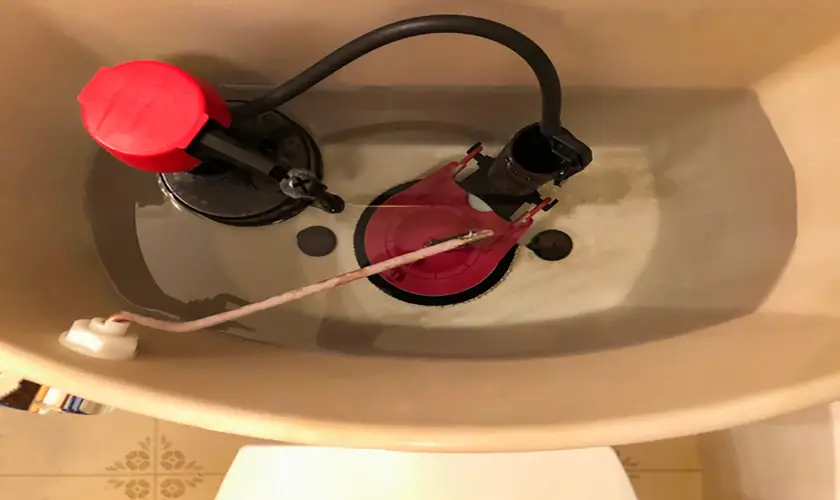
Problems With the Float
Check the condition of the cylinder float and float rod as these cylindrical floats are crucial for maintaining the correct water level in your tank.
The float is the part of the flushing process that tells your water supply when the tank is full, and it can stop releasing water. As the water level in the tank rises back to the top, the float rises with it. The float looks like a softball-sized balloon on older toilets and features a float arm and a float ball. On newer toilets, the float is attached to the side of the overflow tube and doesn’t float.
Regardless of how your float looks, it can cause the same issues. If it’s set too low, gets stuck, or malfunctions, it won’t signal to the fill valve that it needs more water in the tank. The result is that water will shut off prematurely, and the tank won’t fill.
How to Fix
The easiest fix for your float is to readjust it and put it higher in the tank so the water rises sufficiently. However, if the issue is linked to the float itself rather than where it’s at, you’ll have to pursue other repairs. Your best bet is to replace the float. You can do this yourself by purchasing one at your local hardware store or contacting a local plumber to do the job.
- Ensure the water gets turned off to the toilet, as with all toilet repairs.
- Remove the toilet tank lid and set it aside.
- Take note of which type of float system you have because you’ll perform different adjustments on them.
- There should be a small screw with a float ball system where the float arm connects to the fill valve.
- Use a Phillips screwdriver and turn the adjustment plastic screw counterclockwise to raise the hollow float ball and water levels.
- With a float cup, there should be a long, plastic adjustment screw attached to the side of the float.
- Turn it clockwise with your hand or a screwdriver to raise the correct levels.
- Your end goal should be for the water level to be around ½ inches below the top of the overflow tube.
Your Toilet Flapper is Bad
Inspect the flush valve assembly and ensure the flush valve seal is intact. A worn rubber valve can compromise the flush valve mechanism, leading to filling issues.
Your flappers‘ job is to form a perfect seal around the flush tube of your toilet and keep water from flowing into the bowl. When you flush your toilet, the flapper lifts and allows toilet water to flow from the tank to the toilet. If you have an older toilet with an old flapper, there’s a good chance that it’s worn or that sediment deposits have gathered underneath it and won’t allow it to seal.
If your rubber flapper is the problem, likely, you’re also experiencing the problem of constantly running water. When this happens, the flow is non-stop through the refill valve and flush tube at the bottom of the tank and into the bottom of your toilet bowl. Essentially, it’s like a non-stop flush cycle because water will continue to flow from the tank to the bowl.
How to Fix
If you think your flapper is the issue, but it doesn’t appear bent, corroded, or twisted, you can fix it.
- Turn off the water supply to the toilet.
- Flush the toilet to empty the tank.
- Manually lift the flapper and inspect the seal on the bottom.
- If there are mineral deposits, you can use a soft brush, vinegar, and baking soda to wipe them away.
- However, if the flapper is bent, twisted, or corroded, you’re better off removing it and installing a new flapper.
The Trip Assembly
An overlooked component is often the flush handle. If it’s not functioning correctly, it can prevent the effective operation of the flush mechanism, contributing to the filling issue. The trip assembly refers to the toilet handle, the arm inside the toilet, and the connected flapper chain. These components can malfunction and cause a toilet problem, a running toilet, or insufficient water in your tank. A bent trip assembly, an old slack chain, or a disconnected chain can all be problems with the trip assembly.
By following these simple steps, you can troubleshoot common issues, such as a malfunctioning flush valve assembly or a blocked water pipe.
How to Fix
If the broken trip assembly is bent or twisted, you can use your hands to twist it back into the proper position. Keep in mind that the material these things are made of is plastic, so be very gentle with them.
If the problem lies with a slack chain, you can loosen it from the toilet arm and reattach it so that it’s tighter. You can do the same thing on the flapper side, but it’s usually easier to access and work with the trip lever arm.
However, trip assemblies are relatively inexpensive and easy to replace. It’s also one of the most common causes of toilet problems, which means that the necessary toilet parts will be readily available at your local hardware store.
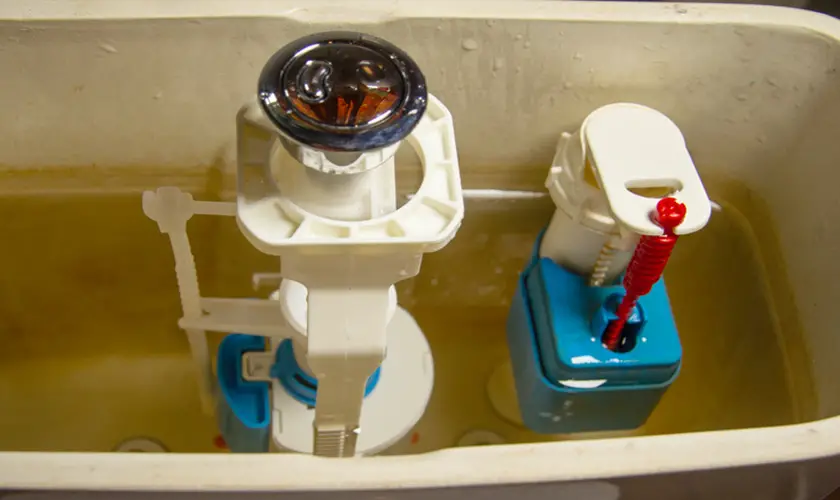
Toilet Tank Not Filling FAQs
What causes the toilet tank not to fill up?
A toilet tank may not fill up due to a closed supply valve seat, a faulty float mechanism, a clogged or defective fill valve, low water pressure, or a leaky flapper. Identifying and addressing the specific issue can quickly resolve the problem.
Why is my water tank not filling up?
If the tank of water isn’t filling up, the issue could be a closed valve, a blocked or damaged supply line, a malfunctioning fill valve, low water pressure, or clogs from debris or sediment.
How do I get my toilet tank to fill up more water?
1. Adjust the Float: Raise the float arm for ball floats or adjust the float clip for cup floats.
2. Open the Fill Valve: Ensure it’s fully open for maximum water flow.
3. Secure the Fill Tube: Confirm it’s properly attached and unobstructed.
4. Clear Inlet Holes: Remove any mineral buildup under the rim.
Why does my toilet tank keep going empty?
If your toilet tank is emptying, it could be due to a leaky flapper, a malfunctioning fill valve, a crack in the tank, an improperly set float, or issues with the flapper chain or tank gaskets. Check these components for signs of wear or damage and replace them as necessary.
Can I fix my toilet if I’m not a handy person?
For those who feel uncertain, seeking expert advice from a plumbing professional can ensure the problem is diagnosed and resolved correctly. While it’s always best to have at least limited plumbing experience, toilets are straightforward and often require easy fixes. If you have Google and the right tools, anyone can fix toilet problems. However, you should contact a plumbing professional for more in-depth issues, such as leaks or plumbing issues.
Why won’t my toilet stop running?
If you have the dual problem of a tank that won’t fill and a toilet that won’t stop running, the most likely culprit is your flapper. If the flapper doesn’t form a perfect seal around the flush valve hole, tank water will flow through the flush valve and into your toilet bowl or down your drain.
What is the most common issue with a toilet that won’t fill?
Each of the problems we’ve looked at is fairly common. However, issues with the fill valve and the flapper are most common in terms of overall popularity. If you experience one problem after the other with your toilet, you’re better off replacing it with a newer toilet. New toilets aren’t costly, and they will solve many issues.
If these solutions do not resolve the problem, it may be time to call in licensed plumbers. A professional plumbing service can provide expert advice and assistance for complex issues.
Final Thoughts
Toilets are not very hard to use. But, they have many parts that move. Each of these components plays a vital role in its operation. If your toilet isn’t filling up with water, the best thing to do is to check each issue one by one until you find the cause. A professional plumber would do this repair process of elimination, so you should, too, even though it takes time.





